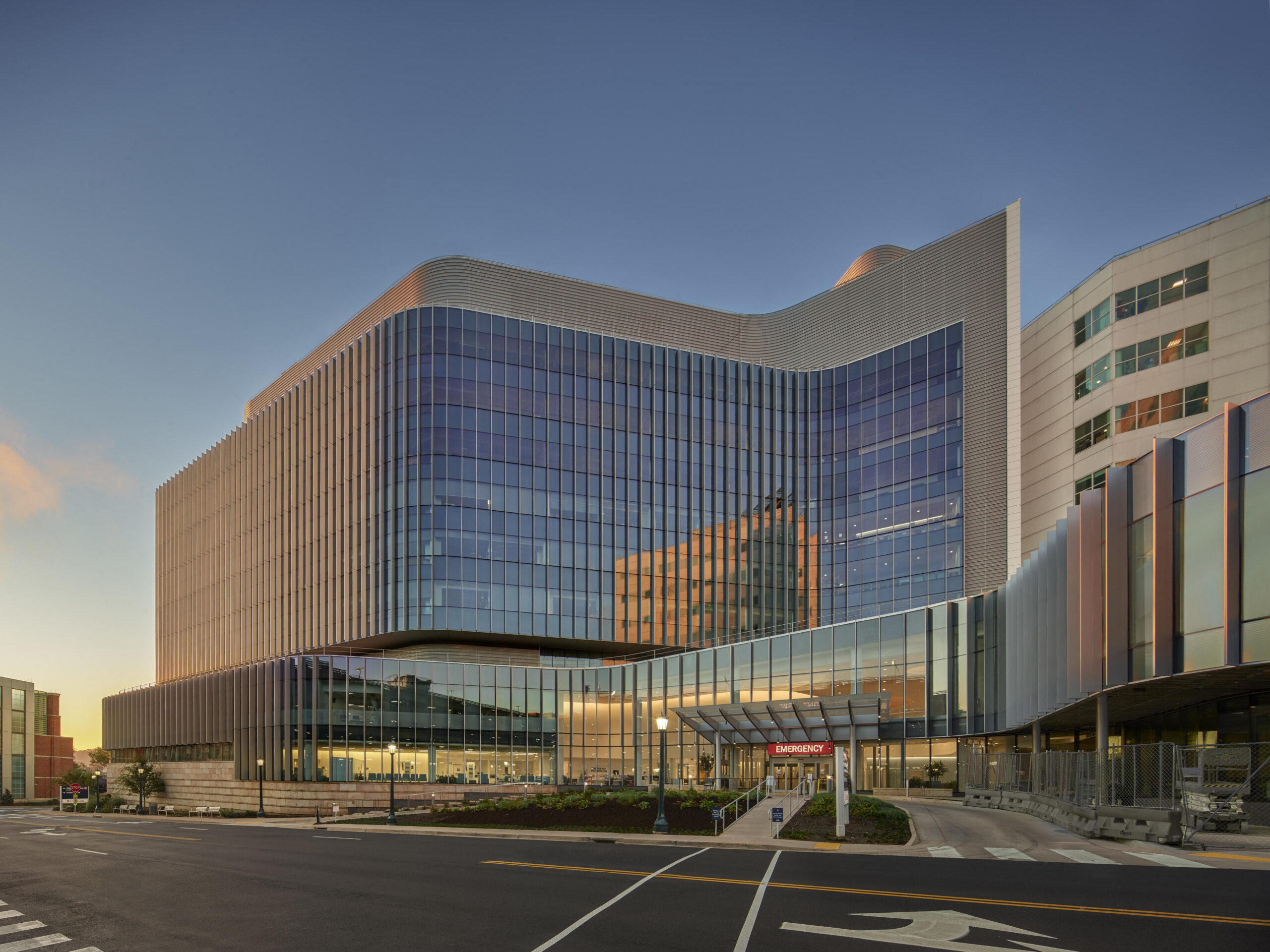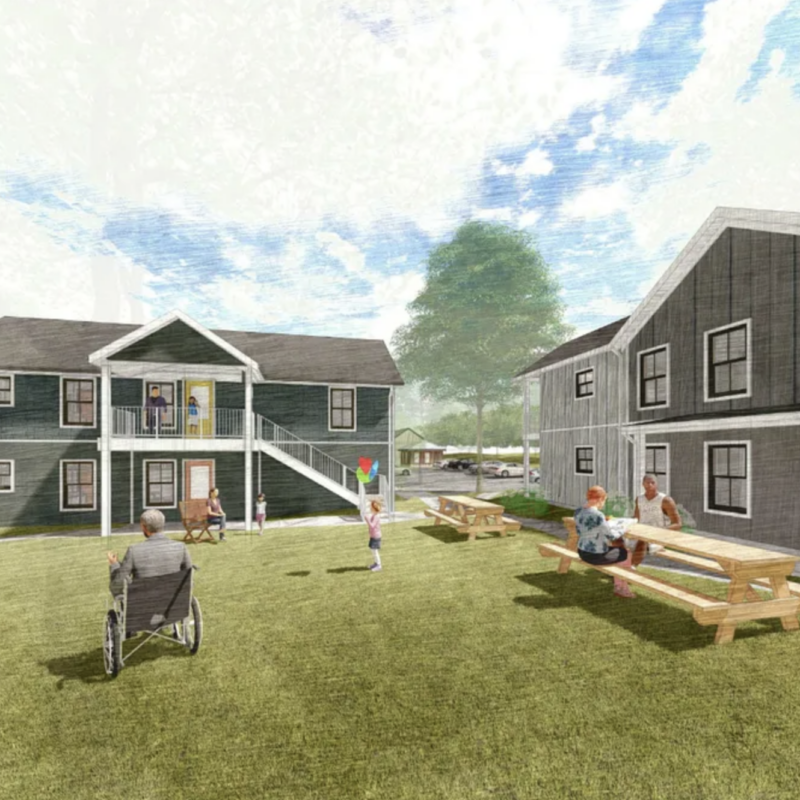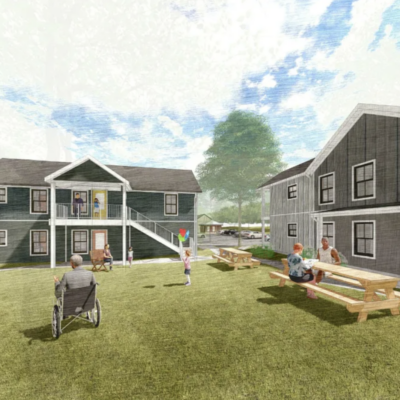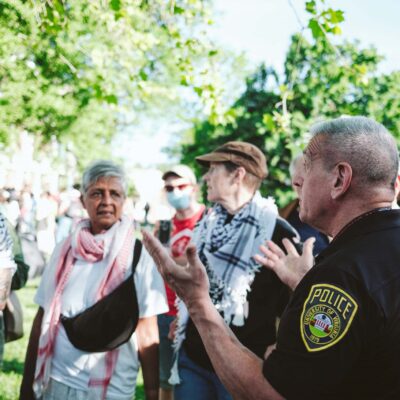The University of Virginia Medical Center is not just one of Newsweek’s top 50 hospitals in the country (and No. 1 in the state), it is the only Level I trauma center in our area. It is also home to some of the world’s biggest medical breakthroughs. As you’ll see in the following pages, UVA is on the bleeding edge of several advancements in medicine, from treatments for one of the deadliest cancers in existence, to a potential cure for neurodegenerative diseases like Alzheimer’s.
Hope for the hopeless
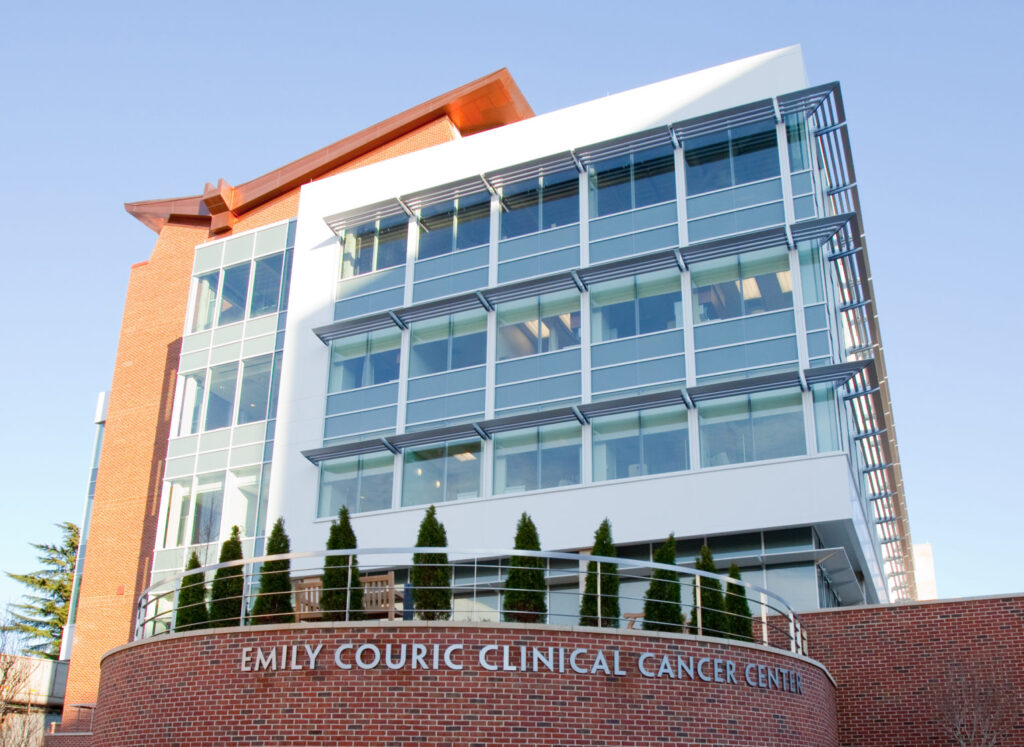
For decades, a small cell lung cancer diagnosis was virtually a death sentence: It accounts for about 15 percent of all lung cancer diagnoses, but is particularly deadly because of its rapid and aggressive metastases. Because of these properties, SCLC staging is often simplified to either limited, where there are no metastases outside the chest, or extensive, where it has progressed beyond the lungs. For those with extensive SCLC, the average survival rate is two to four months without any treatment. The five-year survival rate for extensive SCLC is historically below 2 percent. With treatment using chemotherapy and immunotherapy, the average survival is just over one year. To put that in perspective, the five-year survival rate of pancreatic cancer—another notoriously deadly type of cancer—is approximately 20 percent.
A treatment that improves outcomes for patients with extensive SCLC would be a gamechanger, and that’s what the biotechnology firm Amgen has developed with the immunotherapy drug tarlatamab. It’s known as a bispecific T-cell engager, which utilizes the body’s T-cells (a type of white blood cell) to find, recognize, and attack cancer cells.
Tarlatamab is providing “statistically significant” improvements in outcomes for patients with extensive SCLC, and the UVA Medical Center is one of the only places where this treatment can be accessed.
Richard Hall, MD, assistant professor of oncology and a thoracic oncologist at UVA’s Emily Couric Cancer Center, is now able to give his patients more than just treatment options, he’s able to give them hope.
“Tarlatamab is an important advance in treating relapsed SCLC,” Hall says. “It is a type of immunotherapy that can significantly lengthen the life of patients with relapsed SCLC.”
Hall and the thoracic medical oncology team published the results of their tarlatamab treatments in Clinical Lung Cancer on March 26, 2025. Twenty-one patients were given tarlatamab, and nine of them showed a partial response, meaning their tumors reduced in size and/or quantity. For a disease that is as lethal as extensive-stage SCLC, this is practically miraculous.
“Chemotherapy has been the most common treatment given to patients with relapsed SCLC in the past, but it typically only works for less than six months. Tarlatamab, however, works on average for over a year in patients with relapsed SCLC,” Hall says.
After a six-month checkup, the overall response rate was 42.9 percent, and some patients saw more than six months with their cancer remaining stable and progression free. While there were caveats, particularly with patients with brain metastases developing temporary neurological complications, tarlatamab is giving some patients almost twice as much time as with other therapies.
The last great medical frontier
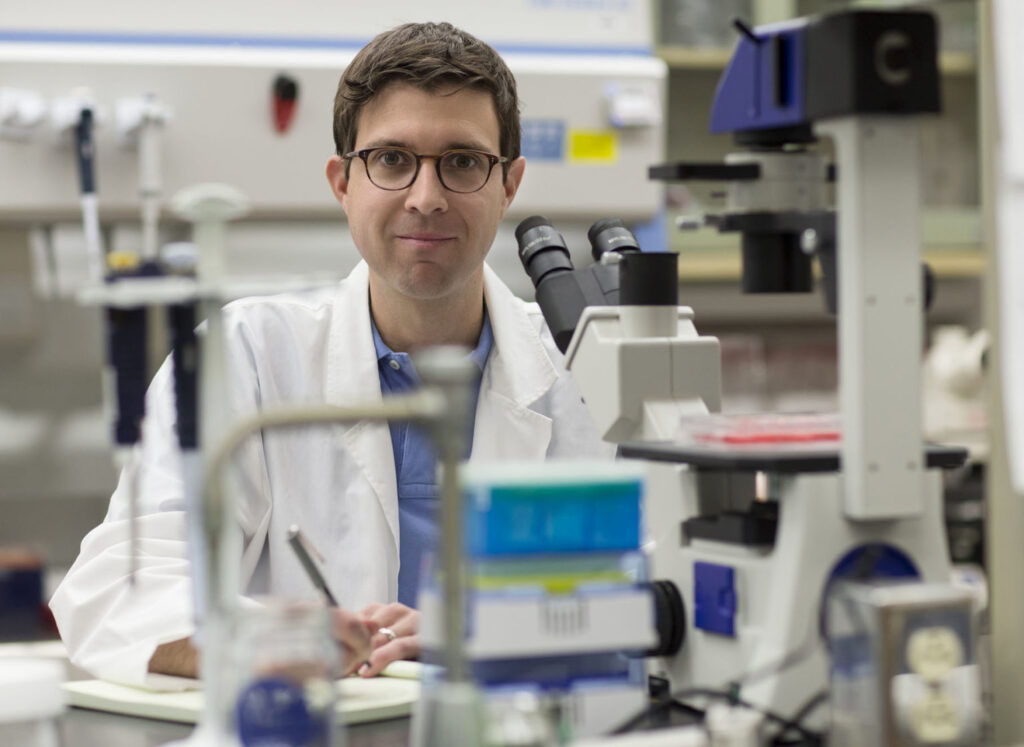
Of all the organs and systems in the human body that are yet to be fully understood, none is more mysterious than the brain. A total grasp of exactly how our brain performs its many functions—memory retention, dreaming, conceptualizing time and the processing of emotion—evade current understanding. Neurology research is one of the last great medical frontiers, shrinking with every discovery that is made.
John Lukens, the inaugural director of the Harrison Family Translational Research Center in Alzheimer’s and Neurodegenerative Diseases and principal researcher at UVA’s Lukens Laboratory, has dedicated his life to understanding neurodegenerative diseases like Alzheimer’s and multiple sclerosis. He has published more than 40 papers on neurology, with his research being cited more than 5,000 times since 2020 alone. But a new discovery regarding how the spleen tyrosine kinase (Syk) controls neurotoxic debris accumulation in neurodegenerative disease could potentially lead the way to prevention—and even a cure.
“Our [discovery] arose from human Alzheimer’s disease genetic data sets that were published a few years before,” Lukens says. “In these human genetics studies, rare mutations in a number of receptors were linked to an increased risk of developing Alzheimer’s disease. From this human data set, we wanted to identify putative molecules that were potentially downstream of many of these rare genetic mutations.”
Lukens’ discovery is a potential breakthrough as it presents a pathway to a possible treatment for both Alzheimer’s and MS, both currently considered incurable. At best, recent treatments and medications for Alzheimer’s and MS provide symptomatic relief. Lukens says that a potential new therapy is on the horizon.
“In essence, small molecules could be developed to either inhibit or boost the activity of Syk,” he says. “There are numerous pharmaceutical companies that are now pursuing this avenue as a potential future treatment option.”
If neurotoxic debris is the cause of these types of diseases, however, one might wonder if simply removing the debris would be a valid treatment. As over-simplistic as it sounds, that’s exactly what Richard J. Price, Ph.D., Nancy and Neal Wade professor of engineering and applied science and the co-director of Focused Ultrasound Cancer Immunotherapy Center, is studying. Magnetic resonance-guided focused ultrasound therapy (MRgFUS) is a new technique that utilizes sound waves to damage or alter specific tissue in the body, including uterine fibroids, certain types of cancer cells, and parts of the brain that cause tremors.
“Focused ultrasound therapy refers to any treatment of a clinical condition using concentrated sound waves, which are applied from outside the body and directed to the region of interest using some form of medical imaging, usually MRI or diagnostic ultrasound,” Price says. “The focused ultrasound therapy can be to destroy bad or malfunctioning tissue using either heat or mechanical ablation. Alternatively, the treatment can change the tissue properties so that drugs can be more effective, usually simply because the drugs have more access to the disease site.”
Price says his lab is working with the Lukens Lab to see how their work can be utilized alongside MRgFUS to treat neurodegenerative diseases, with the goal of developing one of the first remedial treatments for diseases like Alzheimer’s.
“MRgFUS can definitely remove the plaque material in Alzheimer’s Disease,” Price says. “It can actually be a very precise means for doing this, as opposed to being a ‘sledgehammer.’”
A carnivore’s worst nightmare
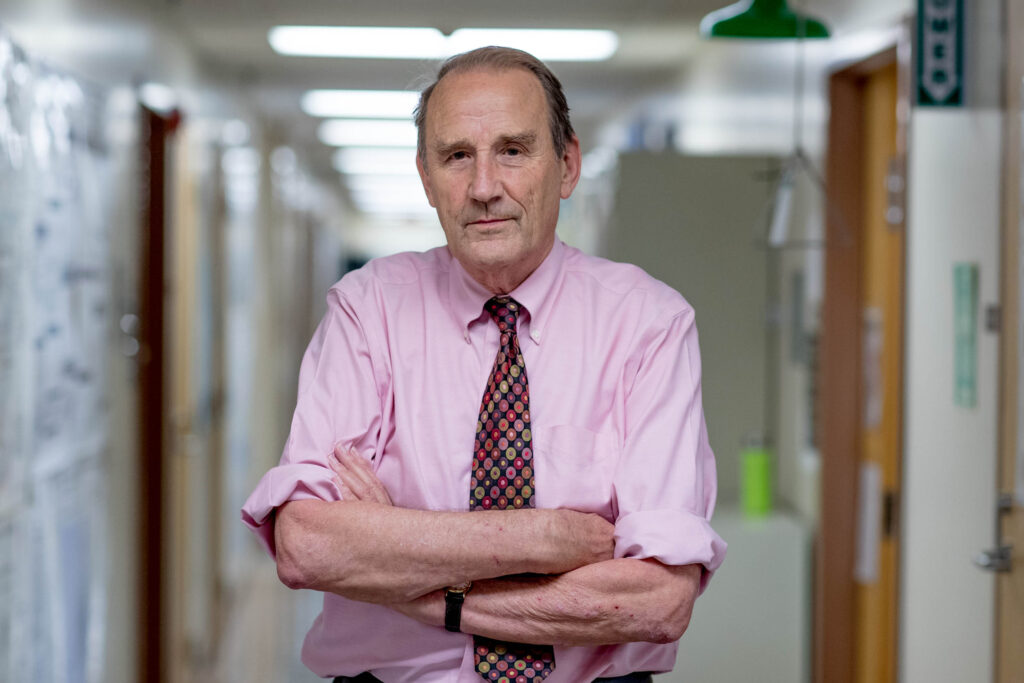
You’re outside, enjoying the warmer weather, and feel a tickle on your neck. Upon closer examination, you realize it’s a bug with the trademark yellow dot of the lone star tick. You dispose of the assailant, and after the itchy, inflamed, weeping bump dissipates over the next few days, you think nothing of it and move on with your summer.
Months later, at a cookout, you take a bite of a hamburger. Soon, you notice a burning sensation all over your torso. You begin to panic as hives begin to cover your chest and it becomes progressively harder to breathe.
It’s called anaphylaxis, a severe allergic reaction, and it’s caused in this case alpha-gal syndrome, known colloquially as a “meat allergy.” It is a process that was discovered by Thomas Platts-Mills, a professor of medicine and microbiology at UVA, who is world-renowned for multiple groundbreaking allergy discoveries.
Jeffrey M. Wilson, MD, an allergist and immunologist who cares for patients at UVA’s Division of Asthma, Allergy and Immunology, says that residents of central Virginia are particularly at risk. “The alpha-gal mammalian meat allergy occurs in people who make allergic antibodies against the alpha-gal sugar,” Wilson says. “Tick bites, and in particular bites from the lone star tick, are the most common way that people start to develop these allergic antibodies. The fact that central Virginia is a hotspot for the alpha-gal syndrome is directly related to the high amount of lone star ticks in this area.”
But Wilson says that not everyone that gets bitten will develop the allergy.
“We don’t have good data on how many people who get lone star bites will go on to develop symptomatic meat allergy, but data from a small ongoing study suggests it could be something like 5 to 10 percent of those who get these bites,” he says.
People who know they have a food allergy are prepared, and often carry an EpiPen with them in the event of exposure. For those who are unaware of an allergy, however, it is unlikely that they will be prepared, and will be reliant on emergency services and a quick response time.
“In most cases we suspect it takes a few weeks for the allergy to develop after a bite,” Wilson says. “Tick bites that are persistently itchy or inflamed for several days after a bite are much more likely to lead to the allergic antibodies.”
Wilson says that they’ve discovered variance in the degree to which people become allergic, and that for some people, the allergy can dissipate in time.
“Alpha-gal tends to fade away over months or years in most patients, but sometimes it can persist,” Wilson says. “Taking measures to stay away from more tick bites is important, as additional bites are more likely to prolong or even boost the allergy. The core of treatment is to avoid mammalian meat and in some cases dairy and other products that also can have some alpha-gal in them. In select cases medications can also be considered to control symptoms, but current medications aren’t cures per se.”
A return to normal?
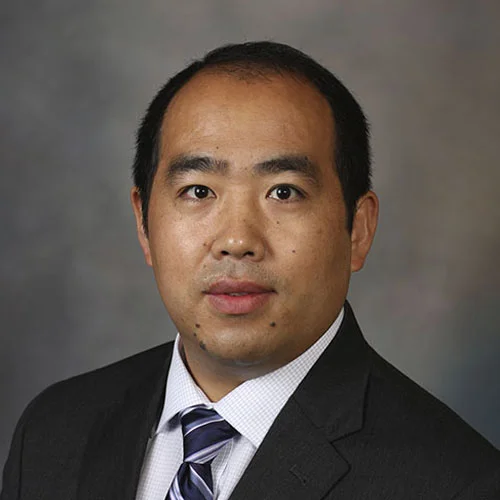
In 2020, the world faced its first pandemic in over a century. By the end of 2021, the crisis was slowly becoming a critical but manageable world health issue thanks to unprecedented cooperation between corporations and governments. A year after that, it was essentially a preventable disease. By 2023, it seemed to many like the danger had passed.
For more than half of the patients who had contracted the respiratory virus, however, life did not go back to normal. Approximately 8 percent of the U.S. population have reported suffering from continuing symptoms including cough, memory loss, fatigue, shortness of breath, headaches, mental health issues, among many others. This is called long COVID, and it can be debilitating.
Jie Sun, Ph.D., principal researcher at UVA’s Carter Center for Immunology Research, has spent years looking at the causes and potential treatments for long COVID, and a way to help those whose lives have yet to return to normal.
“Instead of fully recovering within a few weeks, some people experience symptoms that last for months, and in some cases, even years,” Sun says. “It’s important to understand that while the lungs are a major organ affected by long COVID, the condition is not limited to the lungs alone. Many people with long COVID experience problems throughout their entire body.”
Sun says patients may experience brain-related symptoms like memory issues, brain fog, or headaches. Others may develop heart problems, hormonal imbalances, or issues with their muscles and joints. In some cases, long COVID can lead to serious conditions affecting the nervous system, heart, or other major organs.
Sun’s research has led to the discovery of multiple causes of the pervasive and diffuse symptoms of long COVID, including inflammation and scarring in the lungs and changes to the body’s immune system. Now, thanks to this research, doctors in UVA’s infectious disease department have developed clinical trials for treatments with other immunomodulatory drugs like Baricitinib and Dupilumab.
This breakthrough was important to more than just patients. STAT Madness, an annual bracket-style competition for researchers and academic groups that’s hosted by STAT, a prominent medical and scientific news publication, celebrates 64 of the biggest biomedical discoveries of the year. Three of UVA’s breakthrough discoveries made it to this year’s competition, with Sun’s discovery making it all the way to the round of 16.
“It was truly an honor for our work to be selected and to make it so far in the tournament,” Sun says. “Since advancing in the competition depended entirely on public voting, it felt even more special knowing that people outside of academic circles were excited about and believed in our research.”
Funding the next big break

In early 2024, UVA’s cancer center launched the Accelerating Innovation Fund, an internal funding mechanism designed to push for new cancer medicines, treatments, and diagnostic capabilities at the university. The funding is supplied both by public investments from the commonwealth and charitable donations to the UVA Comprehensive Cancer Center Director’s Fund, a discretionary fund set aside for the university’s most critical and urgent research, such as recently awarded funding of a nanotechnology-based treatment for glioblastoma, a brain tumor that primarily affects children and adolescents.
Additionally, Charlottesville philanthropist and CEO of PBM Capital Paul Manning donated $100 million to fund the Paul and Diane Manning Institute of Biotechnology, a new biomedical research and manufacturing facility on UVA Grounds.
Manning, a longtime health-care entrepreneur who now chairs the UVA Health System board, said in a press release, “Our goal is to have the best possible medicine—next-generation medicine—for the residents of Virginia and people around the globe. We’re building a world-class facility that will compete with anybody… in terms of research, manufacturing, and treatment.”
With so much groundbreaking research being done at UVA, it seems incomprehensible that cuts to National Institutes for Health and the National Science Foundation could result in the abandonment of critical research projects—including potential cures for diseases like Alzheimer’s and long COVID. UVA’s medical school received $287 million in funding from all sources in fiscal year 2023, with $181 million of it coming from the NIH alone. UVA gets approximately a third of its funding from the federal government. As the Trump administration cuts billions from the NIH and NSF ($2.7 billion, according to a U.S. Senate minority report) these cuts will almost certainly impact the groundbreaking research being conducted at UVA. Eric Swensen, spokesman for UVA Health, says funding should not be treated as a win for one political side or another, but for everyone.
“Federal research funding is foundational for biomedical research and the development of new treatments and cures,” he says. “This funding translates directly into longer, healthier lives for people everywhere.”
Featured Image: File Photo
